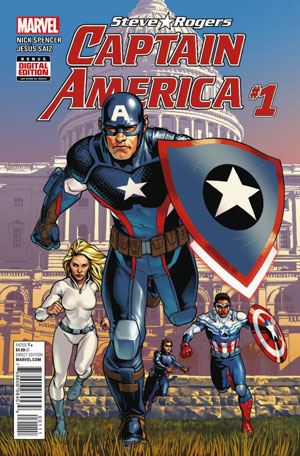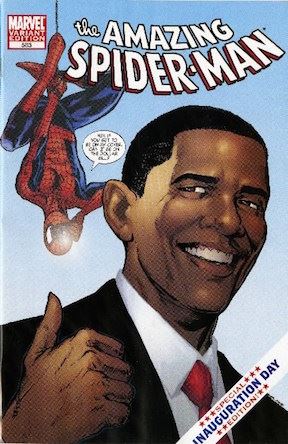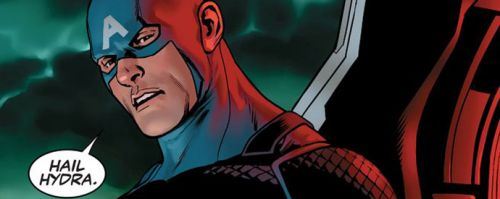Steve Rogers: Captain America #1
By Arch Snite
May 30, 2016 - 14:16
Marvel Comics
Writer(s): Nick Spencer
Penciller(s): Jesus Saiz
Inker(s): VC's Joe Caramagna
Letterer(s): Jesus Saiz
$4.99
How can something so labored seem like it took so little work?
More spoilers ahead than a high school parking lot.
 |
Captain America #1 is the current it-thing in comics. If a single issue of a comic book was on Bing’s little home page news bar thingy, that means that it’s big. And that I’m one of the 4% of people who use Bing. Sadly, though, this issue is mediocre. It’s reminiscent of any number of Cap-beats-people-up stories, which, admittedly, are fun. But there are far better examples— Ultimate Captain America #1, for instance, which follows an eerily similar pattern, but has better writing (and art— no offense to Jesus Saiz; Carlos Pacheco’s hard to beat). Writer Nick Spencer distinguishes himself not by dialogue or plotting, but by a transparent gimmick. None of this means that Captain America #1 is without value, though.
 |
| This was a thing. Unlike Barack Obama's achievements. |
THREE REVELATIONS FROM NICK SPENCER'S CAPTAIN AMERICA THAT ARE ACTUALLY WORTHWHILE
First, America’s < 1% of creative types, even in comics, are not just liberal, but radicalized beyond relevance. Nick Spencer’s story wallows in politics to the exclusion of storytelling. The most noticeable thing about this issue isn’t its story or characters, but the jabs and insults that make it feel like a butthurt response in a youtube comments section. There are offhand digs and allusions to everything from Donald Trump to Ayn Rand to George W. Bush. There aren’t, however, lines or scenes that make Cap sympathetic. If you spend more time on political insults than storytelling, you’re insulting your readers.
 |
| NOPE NOPE NOPE NOPE NOPE NOPE |
Third, consumers need to continue looking outside traditional sources for their entertainment. When I went to my comic store to pick up Captain America #1, I was pleased to see how many third party, indie publishers there seemed to be. Back when I grew up in the Age of Slap Bracelets, the presence of a serious contender like Image Comics was big news. I don’t know what market share current outsider publishers take, but their presence alone is heartening.
As a litmus test of popular entertainment, Captain America #1 is worth five dollars. As popular entertainment itself, however, you’ll find your money better spent elsewhere.
Related Articles:
Captain America Series 1 Marvel Legends Review
Hail Hydra Captain America Kitbash
Marvel Legends (Toybiz) Series 8 Classic Captain America (2004)
Captain America John F. Walker
Captain America First Avenger
Gamerverse Stealth Captain America
VIZ Media Announces "Captain Tsubasa" on Cartoon Network Latin America
Generations: Sam Wilson Captain America & Steve Rogers Captain America #1 comics review
Sam Wilson Captain America #17
Steve Rogers: Captain America #1
